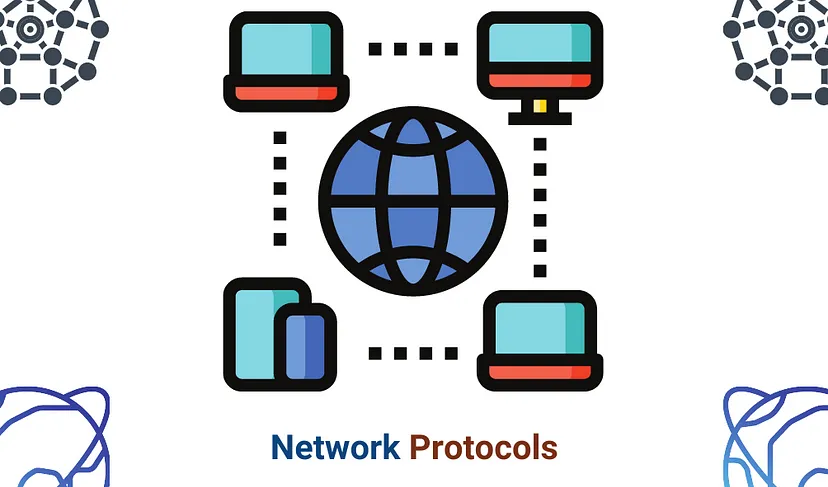The Language of the Network Party: Exploring Different Protocols
 Jasai Hansda
Jasai HansdaTable of contents
- 1. TCP/IP (Transmission Control Protocol/Internet Protocol):
- 2. UDP (User Datagram Protocol):
- 3. HTTP (Hypertext Transfer Protocol):
- 4. HTTPS (Hypertext Transfer Protocol Secure):
- 5. DNS (Domain Name System):
- 6. SMTP (Simple Mail Transfer Protocol) & POP3/IMAP (Post Office Protocol/Internet Message Access Protocol):
- 7. FTP (File Transfer Protocol):

Protocols are the essential "language" devices use to communicate. But just like there are different languages spoken around the world, there are various protocols used for different purposes on a network.
Let's explore some of the key players:
1. TCP/IP (Transmission Control Protocol/Internet Protocol):
Imagine TCP/IP as the universal language spoken at the party. It's a set of protocols that work together to make sure data is delivered reliably. TCP acts like a careful party planner 🎉, breaking data into small packets 📦, making sure they arrive in the right order, and asking for a resend if needed. IP, on the other hand, is like the efficient mail carrier 📬, addressing and routing these data packets to their final destination.
2. UDP (User Datagram Protocol):
Think of UDP as the more casual language used for quick exchanges at the party. Unlike TCP, UDP prioritizes speed 🚀 over reliability. It sends data packets without error checking or guaranteed delivery, making it ideal for time-sensitive applications like live streaming 📹 or online gaming 🎮 where a slight delay is not acceptable.
3. HTTP (Hypertext Transfer Protocol):
This is the language you use to order food 🍔 (data) at the internet's giant buffet! HTTP is the foundation of web browsing. When you type a website address (URL) into your browser, it uses HTTP to communicate with the web server and request the content you want to see (like images, text, etc.).
4. HTTPS (Hypertext Transfer Protocol Secure):
Imagine HTTP with an extra layer of security 🔒. HTTPS is the same protocol as HTTP, but it encrypts the communication between your browser and the web server. This is crucial for protecting sensitive information like credit card details 💳 when shopping online.
5. DNS (Domain Name System):
Think of DNS as the party guest list with nicknames 📖. We remember websites by names like "[www.google.com]," but computers communicate using IP addresses. DNS acts like a phonebook 📚, translating these user-friendly domain names into the corresponding IP addresses, allowing you to easily access websites.
6. SMTP (Simple Mail Transfer Protocol) & POP3/IMAP (Post Office Protocol/Internet Message Access Protocol):
Imagine sending and receiving invitations 📨 (emails) at the party. SMTP is the protocol used to send emails from your computer to a mail server. POP3 and IMAP are like different ways to retrieve emails from the server to your device. POP3 downloads the emails to your device, while IMAP keeps them on the server and allows you to access them from multiple devices.
7. FTP (File Transfer Protocol):
Need to share party photos 📸 (files)? FTP is the protocol used to transfer files between devices on a network. It allows you to upload and download files from remote servers.
This is just a glimpse into the diverse world of network protocols. As you explore further, you'll find many more specialized protocols used for different applications and services. But understanding these core protocols gives you a solid base for navigating the constantly changing world of computer networking.
Subscribe to my newsletter
Read articles from Jasai Hansda directly inside your inbox. Subscribe to the newsletter, and don't miss out.
Written by

Jasai Hansda
Jasai Hansda
Software Engineer (2 years) | In-transition to DevOps. Passionate about building and deploying software efficiently. Eager to leverage my development background in the DevOps and cloud computing world. Open to new opportunities!